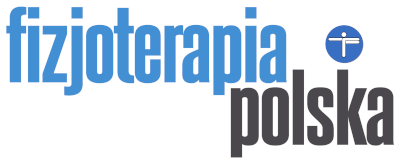The impact of selected correctional exercises on changes in the bioelectrical activity of muscles on both sides of the primary scoliosis
Krystyna Kwaśny, Janusz Nowotny, Edward Saulicz
Krystyna Kwaśny, Janusz Nowotny, Edward Saulicz – The impact of selected correctional exercises on changes in the bioelectrical activity of muscles on both sides of the primary scoliosis. Fizjoterapia Polska 2002; 2(3); 199-202
Abstract
Background. The bioelectrical activity of the spinal muscles was evaluated, as expressed by the frequency of the biopotentials, their average amplitude, and the number of returns on either side of the primary scoliosis. Material and methods. Our research involved 110 boys and girls aged 6 to 16, with a clinical diagnosis of scoliosis. The measurements were made in a relaxed position during an attempt at active correction and in the course of performing certain corrective exercises. Both symmetric and asymmetric exercises were chose for this analysis. Some exercises were conducted with additional information provided about the degree of fault correction through monitoring, light signals, and sound signals. A computer EMG set was used, composed of a 4-channel „Medicor MG-440” electromyograph equipped with a digital analogue, cooperating with a computer appropriately programmed for the automatic analysis of integrated electromyograms. Results. The results we obtained indicate certain corrective potential, expressed by the symmetrization of bioelectric muscle activity in the course of an attempt at active correction of scoliosis. The suitability of the majority of the analyzed corrective exercises was also indicated in the normalization of muscle tension on both sides of the curvature, and especially those which additionally use the mechanism of substitute feedback.
Key words:
Scoliosis, electromiography, biopotentials
| Invalid download ID. | Pobierz bezpłatnie artykuł w j. angielskim |

